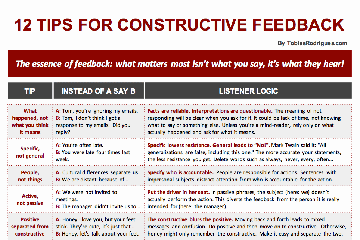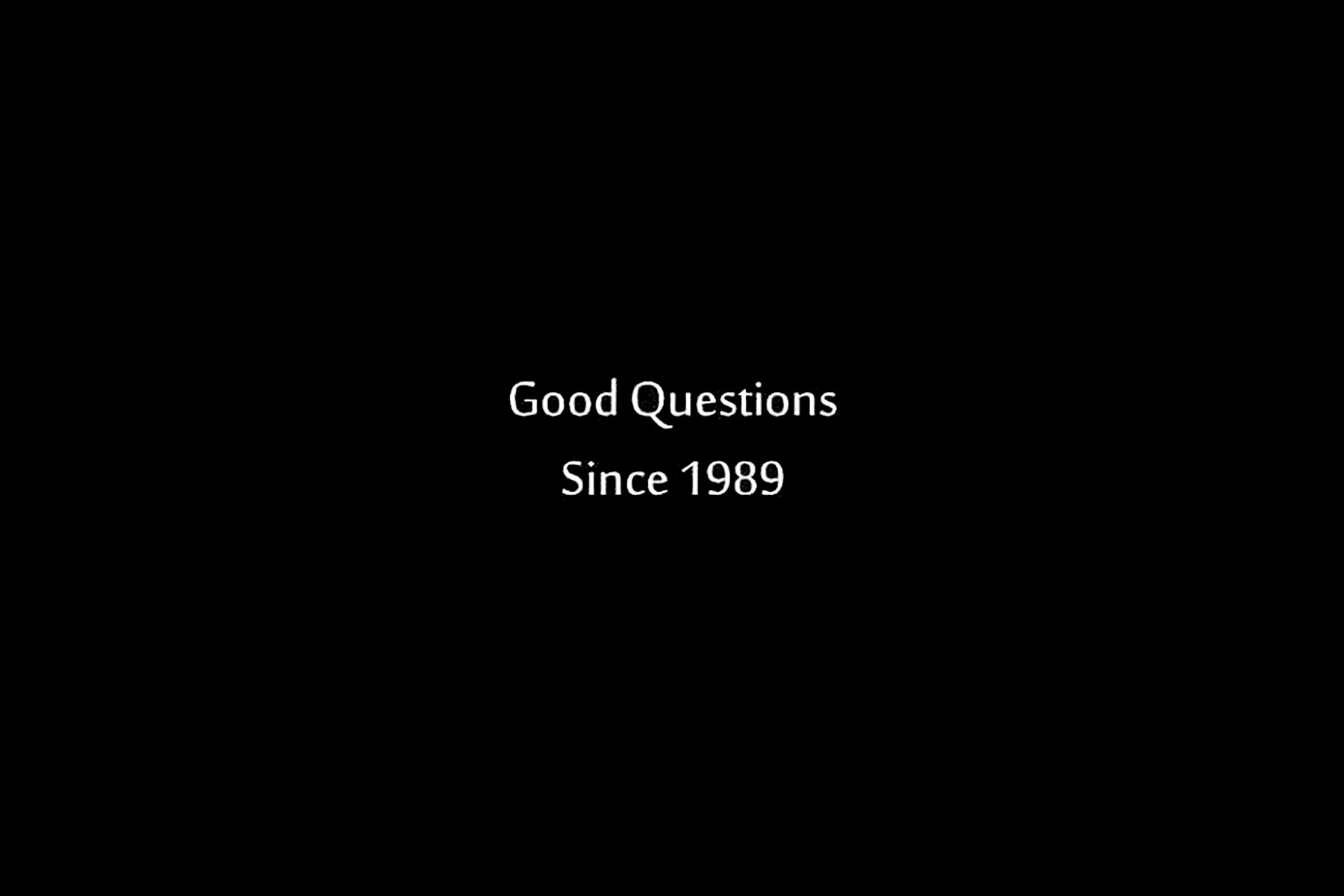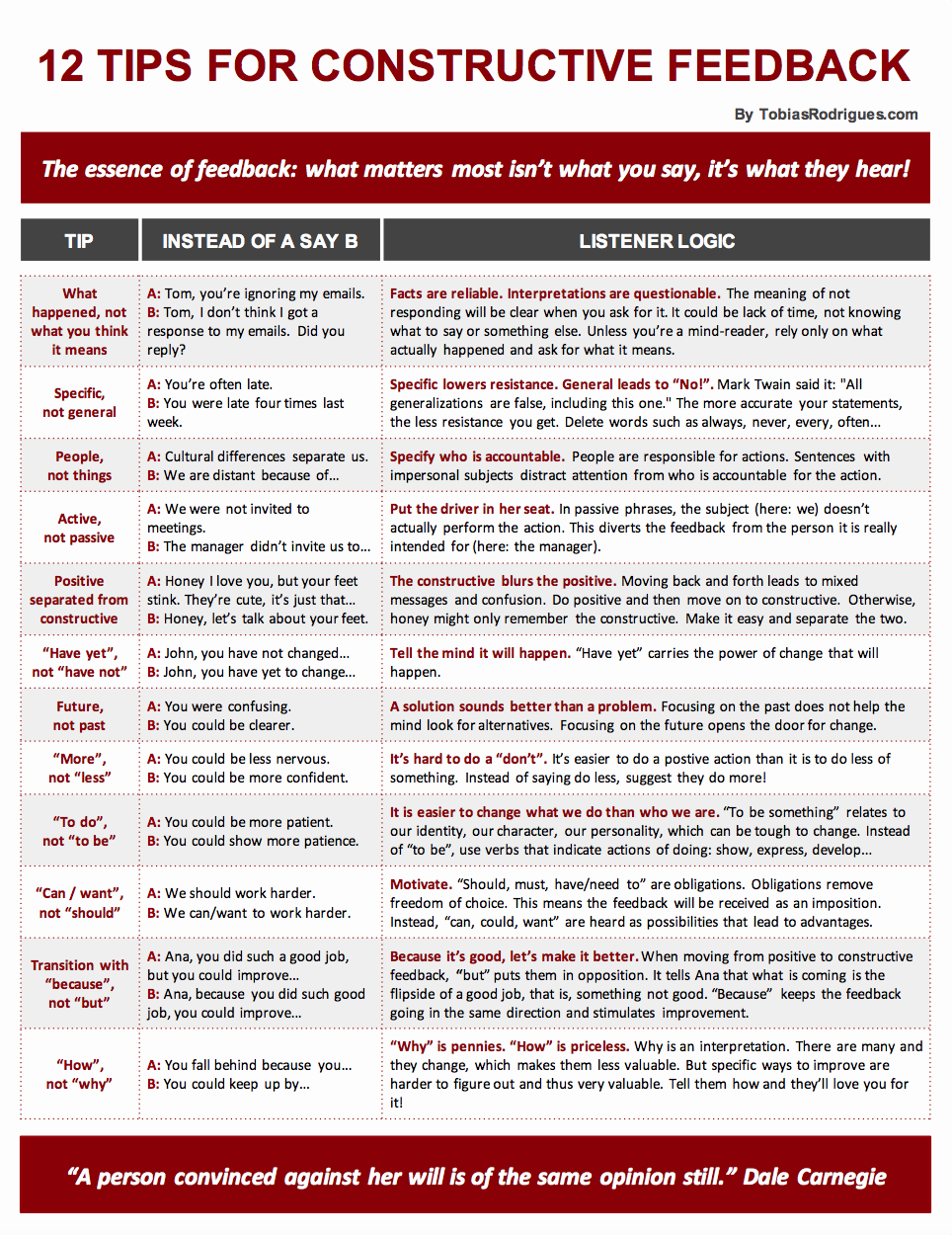Tag: Emotional Intelligence
The Difference Between Sympathy And Empathy

Today I read a post on LinkedIn written by John Ford about the difference between sympathy and empathy. I decided to comment on it, but the amount of text seems to be limited. So I wrote this post instead.
Words matter. Agreeing on what words mean matters more.
The Ancient Greek words for sympathy and empathy (which then found their way into Latin) can provide insight into to their meaning today.
They have a common root, the “pathy” part. It derives from the Greek word “pathos” (πάθος), which means “pain, suffering, passion”.
Prefixed to the root are conjunctions: “sym” meaning “with” (from “sun”, σύν) and “em” meaning “in” (from “en”, ἐν). This adds up to:
Sympathy is “pain with”: to feel the pain with someone.
Empathy is “pain in”: to feel the pain in someone.
Sympathy, in its positive understanding, means we identify with the person’s pain because we’ve experienced the same or a similar situation.
Empathy takes it up a notch: we feel the person’s pain, even though we do not personally relate to their situation. In other words:
Sympathy is putting yourself in someone’s shoes and feeling:
“I know what it’s like, mine feel the same.”
Empathy is putting yourself in someone’s shoes and feeling:
“I don’t know what it’s like, mine feel nothing like that. But I relate to how they make you feel.”
Empathy is priceless when we’re incapable of identifying with the person, for instance, when people do things we could never picture ourselves doing.
Empathy allows us to connect with them by identifying with their feelings and emotions, even though we consider their actions and behavior unacceptable.
12 Tips For Constructive Feedback

Whether a direct report, a manager, a colleague, a friend or a partner, giving constructive feedback is a crucial element of our relationships.
.
How you give feedback
determines how it is received.
I moderate constructive feedback sessions for teams and their leaders, and some patterns prove to be more effective than others. Here’s a set of keys that unlock the doors for constructive feedback to be well received.
Download and discuss them with those you give feedback to.
What matters most
isn’t what you say, it’s what they hear.
So by all means, I’d love to hear your constructive feedback.
Is Your Small Talk SMART?

Last week I attended the 3rd Hola Barcelona Cocktail, an event organized by Barcelona Global to welcome new international professionals arriving in Barcelona.
The purpose is to strengthen the relationship between Barcelonians by birth and Barcelonians by choice. It was lovely. I met wonderful people and conversations were great, which got me thinking: What makes small talk interesting?
The topic is important, but not everything — you can have a pointless conversation about a great topic! The key is HOW we talk.
Make small talk SMART:
Supportive, Meaningful, Authentic, Refreshing, and Tasteful
But, is small talk really that important? After all, it’s just chit-chat, right? Or not? Is there a connection between small talk and other areas of our life?
As a team effectiveness trainer, I often join teams for social events after the training. And for 4 years now I’ve been looking for a connection between the quality of small talk and people’s professional and personal fulfillment. I’ve found one:
Effective leaders and teams engage in smart small talk.
There’s a chance I’m seeing what I want to see, which begs the question: Is there scientific evidence to support my findings? I did some digging and there is.
For instance, Judith E. Glaser has coined the term “Conversational Intelligence” or “C-IQ”, a person’s ability to connect with others through conversations and to jointly think innovatively, empathetically, creatively and strategically.
Judith and the people at Benchmark Communications Inc. have studied the neurochemistry of conversations and shown that managers who “talk smart” are more successful than those who don’t.
So small talk is not just a chit-chat. Smart small talk does make a difference!
Here’s an experiment to spice up conversations at your next event:
- Step One: Identify interesting angles to the conversation, relevant aspects or perspectives that are being overlooked.
- Step Two: Ask a politely provocative question. This will accomplish two things: you’ll get people’s attention and you’ll spark openings for more meaningful dialogue.
- Step Three: Pick a positive message. This is important because you want to contribute to the conversation in meaningful way.
Easy to remember: Angle + Question + Message.
What do you do to keep the small talk smart?
No One Plans To Be An Idiot

Ever been in a situation where someone is slightly rude but in a polite way? Isn’t it annoying? The other day, a friend told me a member of the cleaning staff at work made an unpleasant “humorous” remark about how her files were “organized”.
“This made me realize that most of his remarks”, my friend explained, “aren’t really nice. In fact, they’re more like criticism disguised as humor.” Then she added:
“If I tell him to mind his own business, there’s a good chance I’ll come across as rude. If I start a conversation, I risk making too much of an issue – after all, I’m not his boss. But if I do nothing, things will continue as they are. What should I do?”
When we’re impolite or inconsiderate,
it’s out of weakness not strength.
“Where do you think this comes from”, I asked, “and why do you think he feels the need to say this kind of thing? Do you think he has something better to say and purposely changes it just to be critical?”
I went on to suggest that before she decided what to do, she might want to consider that negativity, like bad habits, has an acute ability to sneak unnoticed into everyday remarks. Unawareness of this accounts for some impoliteness.
On the other hand, I argued that genuine jerks are rare creatures and that pure stupidity is not the standard. No one plans to be an idiot. And on good days, most of us are not.
We tend to fall into the trap of disrespect
when we feel hopeless not hopeful.
Unpleasant remarks happen when we don’t know any better or when we’re having a bad day. When someone disrespects or provokes you, chances are they did it out of weakness, not out of the abundance of their strength.
I’m not saying you give them a break, I’m saying: Look at it from this angle. It places you in a position of greater power to decide how to influence the outcome of the situation.
My friend decided she’d give it some thought before acting. And it occurred to me we’d love to hear your suggestions: “What do you think she could do?”
A Lesson From Tough Times


Think of someone who causes a sense of admiration when you recall the tough stuff they’ve been through and still managed to keep it together. How did they do it?
Lao Tzu said that the person who conquers others is strong while the person who conquers him/herself is mighty. How do you do that? Is there a formula?
It is precisely the extreme events of our life
that show us the essence of growth.
My personal experience of “intense” change includes moving unexpectedly at the age of 13 from Canada to a tiny Island of Portugal; losing quite a bit of weight (25 kg/55 lbs), and a career change.
More importantly, I’ve seen others go through much tougher events, such as an unjustly large jail sentence, the shaking news of a terminal illness, the untimely death of a son or the raw suicide of a sibling.
What does it take for us to change or overcome imposed change? In all these situations, I’ve noticed two defining forces that allow us to effect change or to overcome imposed change: pain and pleasure. I call them “The Curves of Change”.
The curves apply both to a desired change we wish to implement or an imposed change we wish to overcome.
Pleasure makes change desirable.
Pleasure is an attracting force: it pulls us to change. When faced with a situation to overcome, visualizing the pleasures that we will receive creates the desire to change.
For ex., when my family and I moved, the desire to make friends impelled me to quickly improve my Portuguese. When I lost weight, the idea of being slimmer made me want to exercise. When I changed career, the hope of more freedom fueled me to complete another master’s.
When we want to change, the first step is to visualize the pleasures that will be obtained as a result of changing. This provides the motivation to take action.
Pain makes change inevitable.
Pain is a repelling force: it pushes us to change. Pain is more effective than pleasure. Often there’s a taunting voice in our head: “It’s too hard. It’s not worth it. Not now.”
The efforts involved in changing can sway us to give up and settle for the way things are. The solution to reducing the pain involved in changing is to emphasize the pain involved in not changing!!
The solution to overcoming
great pain is a greater one.
For ex., when we moved, feeling ridiculous when I talked helped me overcome the challenges of an unfamiliar language. As I lost weight, the idea of feeling tired again drove me to stick to months of strict dieting. When the uncertainties of a new career made me doubt, the thought of another month doing the same thing pushed me forward.
The second step is to reduce the pain involved in changing by emphasizing the pains of not changing. This eases the feeling of discomfort involved in changing and gives us the stamina to endure.
Have no doubt, the road of change turns to lessen pain and curves to enhance pleasure. Be sure to look at it from this perspective. To successfully effect any change, engage in increasing pleasure and getting rid of pain!
What roles to pain and pleasure play in the curves of your change?
Decide The Ending To This Story

It was a Saturday. John had recently moved into his new apartment and was in the process of unpacking the wall of boxes standing tall in his living room.
After a couple of weeks adjusting to the new environment, he decided that this weekend he’d finally unpack.
In a box labeled “fragile” and among a bundle of gym clothes, John found a painting his younger sister had made for him before he moved. It depicted a tall, self-confident man in a suit, smiling at the viewer, and plugged by an electrical cable to what seemed to be a small red machine with wheels and a sign that read: “Good Questions Since 1989.”
As he stared into the man’s eyes, he wondered what his sister meant. He liked the painting and decided to put it up on the center living room wall. He managed to find the old rusty coffee can where he kept nails and screws and stuff. But after seven other boxes and lots of things all over the place, he gave up the quest for his toolbox.
Suddenly, the art restoration shop across the street came to mind. He had noticed it more than once: different, fresh, full of light and color. “Hey!” he thought “Maybe they could lend me a hammer.” He skipped over to the window and looked down to check if it was open. It was.
“Good” he thought. “The owner, that tall, self-confident young man that wears a suit, seems to be a nice guy. He might even remember me — I’ve seen him more than once at the café next door. Yah, I’ll ask him to lend it for just a minute. Why wouldn’t he lend me a hammer? Just because I’m a stranger?”
John stumbled around the apartment looking for his keys, which he eventually found on the couch under all his sports gear. As he went for the door, he thought: “Come on, John, you wouldn’t lend a hammer to stranger, right?” And it crossed his mind that a shop like that must have expensive and fancy equipment. The owner needs to protect it.
With growing doubt, he stepped into the elevator and pressed zero. As he looked at himself in the mirror, he said: “Is there a reason for him not to trust me?… Well, folks don’t trust each other like they used to, do they? And besides, I’ve just moved in. For all he knows, I’m a thief!”
Ding! The elevator door opened and John stepped out. He exited the building, looked across the street to the shop and asked himself: “Give me one good reason why he shouldn’t help me?” Then he thought: “Well, for starters he could be a selfish jerk who doesn’t give a damn about anybody!”
He resentfully crossed the street and walked into the shop. “Good morning!” He bluntly blurted to the young man in a suit sitting behind the counter. The man stood up and with a smile replied: “Good morning, Sir. How can I help you?”
With a cold face, John looked him in the eye and, with a touch of bitterness in his voice, said: “You don’t know me and there’s no reason for you to trust me. For all you know, I’m a thief. I actually live across the street and can’t find my hammer. So for just this once could you not be so overprotective and lend me one of those expensive hammers?!”
To the amazement of all those in the shop, the tall, self-confident young man disappeared into the back, dragging behind him his red portable oxygen tank on wheels. He returned bearing a hammer in his hand. In silence, he extended the gift to the stranger.
After thanking him and promising to be right back, John turned and left the shop. As he was crossing the doorway, the young man said: (now pick the ending you like most)
Ending 1: “By the way Sir, this is why I love my work. You see, since 1989 we’re in the business of restoring not only paintings but, more importantly, perceptions!”
Ending 2: “By the way Sir, since 1989 we repair problems with better questions. Try it. You see, the mind has no choice but to always find an answer — even to bad questions!”
Ending 3: One of your own.
Make It Touchable, Belarmino Said

“What motivates people?” – I was asked in a recent interview. The question reminds me of a story back when I worked in prisons. My colleagues and I had been asked to do a mini workshop with the inmates about identity and self-perception.
The key to motivation is to find the right reasons for someone to want to do something.
How on earth were we going to get prisoners engaged in a mandatory session on identity and perception?? I remember we were in the prison’s community area, brainstorming on how we could pull this off, when one of the senior guards said:
“Don’t sweat it. If they don’t want to do something, they won’t. And there’s nothing you can do about it.” His intention wasn’t to discourage us, rather to warn us not to get our hopes up high. It didn’t work – we did get our hopes up!
I remember us thinking: “Okay, so if what this man is saying is true, all we have to do is get the prisoners to want to do the workshop.” We realized that they would do anything we asked them to do, as long as we found a way for them to want to do it.
In fact, this became a guiding principle for our activities during the years we worked with inmates. And we did accomplished some cool stuff, such as plays, holiday parties, gastronomic events, even a meditation retreat!
If you want to motivate someone, make it touchable.
Appeal to their interests, not yours; their values, not yours.
On that particular occasion, we asked an actor friend, Belarmino, to help us. He suggested: “Let’s make it touchable”. So he asked the inmates to take turns in pairs in placing a sheet of tinfoil on each other’s face and to gently mold a mask.
Belarmino asked each one if they recognized themselves in the mask and contrasted their opinion with comments from the group. Et voilà! – thirty inmates having a philosophical conversation about self-perception and identity. Impressive!
We then formed a circle and passed a broomstick around. Everyone pretended it was a different object and the group guessed what it was. This way Belarmino conveyed the idea that when we change our actions, the way others perceive us also changes. Effective and fun!
To this day, when I think of motivation, I remember Belarmino: “Make it touchable!” To make people do things is not to motivate them. That’s to force them. To motivate is to find a way for them to want to do it. And if you can do that… they’ll do anything for you!
Do you know someone who could benefit from Belarmino’s inspiration? Share his story!
Do Your Requests Inspire Trust?

Have you noticed how some people tend to always get what they ask for at work: a raise, time off, more time, change in plans, etc.? And what’s more, everyone seems delighted to attend to their requests. What’s their secret?
You might remember when you were little, grownups requesting the magic “P” word when you asked for something: “What do you say?” And then we’d say: “Can I… PLEASE?” Demands and requests were clearly differentiated by the “P” word.
Intended or not, the effects of this practice reach beyond good manners. It taps into how our brains are wired: When a person hears your petition as a request, she feels the power to contribute to your wellbeing. If she willingly does so, she will feel satisfaction.
People who don’t care how their requests are received instill distrust and have a hard time getting what they want.
When a request is heard as a demand, it feels like an imposition. This leads either to rejection or submission, both harboring feelings of resentment, anger or other nasty things that can pop up in the future to bite us.
In a grownups’ world, where roles aren’t always clearly defined, requests and demands can look a lot alike. A simple “please” might no longer do the trick:
“Hey Jeff, I want that budget by the end of the day please.” “Kate, please send me the report now, got it?” Are these requests or demands? What counts is how the person hears your request. It’s what makes the difference to get what you want.
You get what you want when you voice your needs in a way that others hear them as requests, not demands.
Three things you can do to assure your requests are heard as such: Prepare to hear “no”. Ask the person to tell you what she just heard you say. And promise yourself not to engage in persuasion until you’ve understood the person’s explanation.
This has an incredible effect: it shows you care about that person’s needs, not just your request. She will feel this. This generates trust, a new opening to express your request.
It’s funny: you get what you request by being prepared not to get it! Another option is not care, but that brings us to square one: demands. And we know how that ends, right?
Words That Empower You

I’ll never forget the first time I was called on in class after moving to Portugal. It was the ninth grade geography class. I studied hard. But, having recently moved from Canada, my teenage mind was still in French mode: I read in Portuguese, but my brain worked in French.
So after clearing my throat to talk, nothing intelligible came out. A huge laugh from everyone was the result, including the teacher! That day I understood (the hard way) that words play a big role in communication.
Similarly, language has a powerful influence on relationships. The words we use to express ourselves – and before that the words we use to think of ourselves and others – shape the way we feel when we relate to others.
When we feel empowered – calm, clear and confident – we relate to others in a rewarding and dynamic manner. When we don’t, relationships are unproductive and toxic. Words play a major role in this.
Here are 2 ways to use language to empower relationships:
- When facing a challenge, use sentences where “I” is the subject instead of “you”. I’m not saying we talk about ourselves all the time. I mean that when we describe our reality with “I” sentences, the power to influence and change that reality increases greatly.
“You” sentences tie your hands. You depend on others.
Imagine your coworker Emilia has the ball, the ball being anything you want. Consider the sentence: “Emilia has the ball and won’t give it to me.” Here, Emilia has all the power because she’s the subject: She has the ball; she won’t give it to you.
“I” sentences give you agency,
the power to shape your reality and relationships.
Now consider this: “Emilia has the ball and I haven’t found a way yet for her to give it to me.” Here, power is balanced: She has the ball but you haven’t yet found a way to get it. Now there’s something you can do (find a way), which means you have power. Subtle but very effective.
- In difficult situations, use the verb “to do” not “to be”:“to be” is disempowering because it focuses on the person; “to do” is empowering because it focuses on the event.
For instance, you turn to Emilia and say: “You are uncooperative”. This suggests a negative feature about her, which might provoke a defensive reaction on her part.
Instead “you did something uncooperative” might avoid that because it describes an action, not her. Moreover, “to be” suggests more permanent traits; while “to do” leaves room for things to change.
The language of “I” and “to do” is empowering.
It enables us to feel calmer, clearer and more confident.
Sometimes the influence of language is not evident and can be tricky to use. Leave a comment with what is on your mind. You can also send me an email to t@tobiasrodrigues.com. Looking forward to hearing from you.
By the way, there was someone in my geography class who actually thought my attempt was kind of cute: the pretty sister of one the real popular guys in school. It was my first “Portuguese” crush.
It’s Always My Fault!

 On Tuesday, a client and I met to discuss a session we’re going to do on relationship management. One of the topics was how the corporation’s managers sometimes can’t stand some of the people they work with. They feel it’s useless and case closed.
On Tuesday, a client and I met to discuss a session we’re going to do on relationship management. One of the topics was how the corporation’s managers sometimes can’t stand some of the people they work with. They feel it’s useless and case closed.
I love this topic, especially when it comes up in my seminars. It’s always interesting to see the look on participants’ faces when I present the commitment ratio of the relationship building system I created: 80% you; 20% the other person. What?!
Yep, that’s the look on their faces. You do 80% of the work and the other person does 20%. “That’s not fair!” — some might say. Relationship management at work is not about fairness (that comes later), it’s about effectiveness.
The ultimate challenge is not
how you relate to others. It’s how you deal with YOU!
Relationships need to function for everyone to get their jobs done. An 80/20 ratio assures your commitment produces functioning results that guarantee performance. “But it doesn’t make sense: the other person is the problem, not me!” — others object.
This reminds me of a story back in my university days. One late night, as I was making my way home, I saw a man literally banging his head against a street post. I kind of recognized him, so I walked up to him.
After a long monologue, I came to learn his tragic story. His wife had left with another man and took the children. His partner was no longer a partner. His business was crumbling. He was drinking… I almost felt sorry for him. But then I didn’t.
It’s a tough lesson: either you take on the responsibility
of being in charge of the events of your life or… you don’t.
When he finally asked if I wasn’t going to say anything, I asked: “You expected people would behave in a certain way, right?” What?! — was the look on his face. Then silence. Then a smile.
“That’s right”, he said. “I’ve blamed everyone around me for everything that has happened to me. That puts the power to lead my life in their hands, not in mine. To be in charge, I need to accept it’s my fault.”
That day, that man began to understand that it will always be up to him to take charge of how relationships affect his life and how he will proceed. He understood that the outcomes of our relationships start with us.
Today, that man leads a fulfilling life — lots of challenges no doubt, but fulfilling. Today, he is an 80/20 man, committed to producing functioning results that guarantee performance. His approach is: regardless of what happens, it’s always my responsibility.
Could this work for you? I’m eager to see how the managers will respond!


